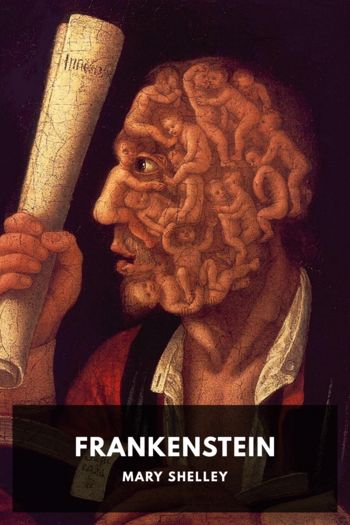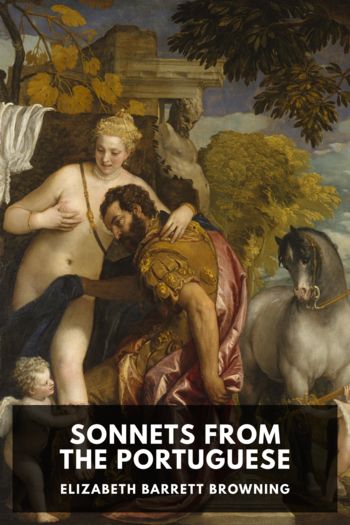Two-Way Mirror Fiona Sampson (best romance ebooks .txt) 📖

- Author: Fiona Sampson
Book online «Two-Way Mirror Fiona Sampson (best romance ebooks .txt) 📖». Author Fiona Sampson
As Bummy, Henrietta and Papa picked up the pieces in Montpellier Terrace, Elizabeth simply shut down. ‘She read […] every letter from Cheltenham […] without its producing the slightest effect upon her.’ Partly, she may have been repeating the coping mechanism learnt at eight when her sister Mary had died. But it seems to have been already in place even then:
I remember [in] infancy being told by a servant […] “that I was cold and unfeeling and that every one thought so whatever they might say”—I heard this declaration with great pretended calmness—tho my head perfectly seemed to swim […] No! I could not preserve buoyant spirits when the bitterness of death was at my heart! I was young very young then to govern myself—but I […] gloried in that self command, but […] when I was left alone […] with my pillow […] tears gushed wildly forth!
And now, aged twenty-two, her pattern had been confirmed. Though she’s going to experience much loss in the years to come, grief will nearly always silence her.
The twenty-six-year-old who faces the possibility of having to leave Hope End has already suffered two close family bereavements, and willed herself back from grave illness. But by a similar effort of will Elizabeth is also gradually turning herself into a major poet. For her, words represent not death but life.
[
Third Frame
]
If stories can be portraits, we also read portraits as stories. That’s true even of the famous dead. In the much-copied lost mural by Hans Holbein the Younger, King Henry VIII’s barrel chest and square jaw suggest to me nothing so much as a hard-drinking bully. Despite the famous smile, Mahatma Gandhi’s gaze remains as steely as his spectacle frames in photographs Henri Cartier-Bresson took on the last day of his life, while I understand his body language as a public statement about the attributes of nonviolent leadership.
I mean that I read off from these portraits directly, as if from life. For, more than work in any other genre, portraits seem to disavow that they have been made. They ask us to be naïve literalists, to believe them; it’s as if they want to exempt themselves from the rules of the art game. Usually we view work made in different genres – oil, miniature, fresco With Kneeling Patron, press photo, lightning sketch – in different ways: whether pouring raptly over vitrines or standing awestruck among the draughts in a thirteenth-century cloister. But portraits tend to cluster under the name of the sitter instead: despite the fact that their real subject isn’t perhaps a person so much as an encounter between two people, the artist and her subject.
Of course, that encounter is no longer ‘live’ within the image. The portrait itself has broken up the reciprocity of the meeting between artist and sitter, portraitist and subject: leaving the subject’s face, but not the artist’s, visible; and the artist’s experience, but not the subject’s, in view. Only in a self-portrait do both sides of this encounter still seem present. Perhaps that’s because the self experienced and the self experiencing are both there together in the face we see. Rembrandt van Rijn’s self-portraits, for example. The way they bring us into the presence of a compassionate, searching and earthy self – one who appears ‘dug out of humanity’, as Elizabeth puts it.
Book Four: How to manage change
In upright consciousness of place and time.
Do we become different people in different places? Opinionated as ever, Elizabeth sums up Sidmouth within four days of her arrival:
The town is small & not superfluously clean; but of course the respectable houses are not a part of the town. Our’s is one which the Grand Duchess Helena had,—not at all grand, but extremely comfortable, & cheerful, with […] pleasant green hills & trees behind. […] You may suppose what a southern climate this is, when I tell you that myrtles & verbena three or four feet high, & hydrangeas are in flower in the gardens.
It’s August 1832, and the calamity everyone’s been dreading has finally occurred. Papa has been forced to sell Hope End, and the family to leave their idyll there for good. Once it’s done, though, the move will feel almost inevitable. And perhaps there’s a kind of relief after months of anxiety. As it turns out, Elizabeth’s time in the Devon town will be one of the most ‘comfortable, and cheerful’ of her life, as she learns to adapt and change – and to enjoy doing so.
Over the last year at Hope End, her father has scoped out possible new addresses at Eastbourne, Brighton, and the Isle of Wight: all south-coast resorts rather than the fashionable centres that are closer to home, like Cheltenham or Bath. Perhaps he can’t face meeting people he knows in his new, reduced circumstances. He has certainly been increasingly reclusive since the sale became a reality: it ‘has made Papa shrink from society of any kind, lately. He would not even attend the religious societies in Ledbury, which he was […] so interested in supporting.’ In 1808–09 it had taken him a year to find the Herefordshire property that has defined him, and he did so alone, leaving his wife to await his decision. Now it’s the turn of his adult children to wait powerlessly for their





Comments (0)